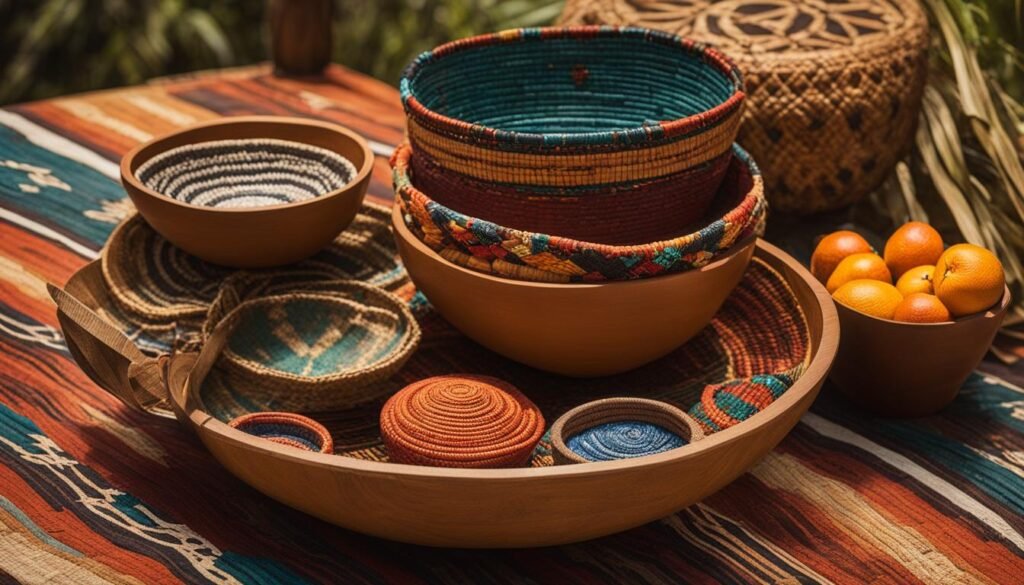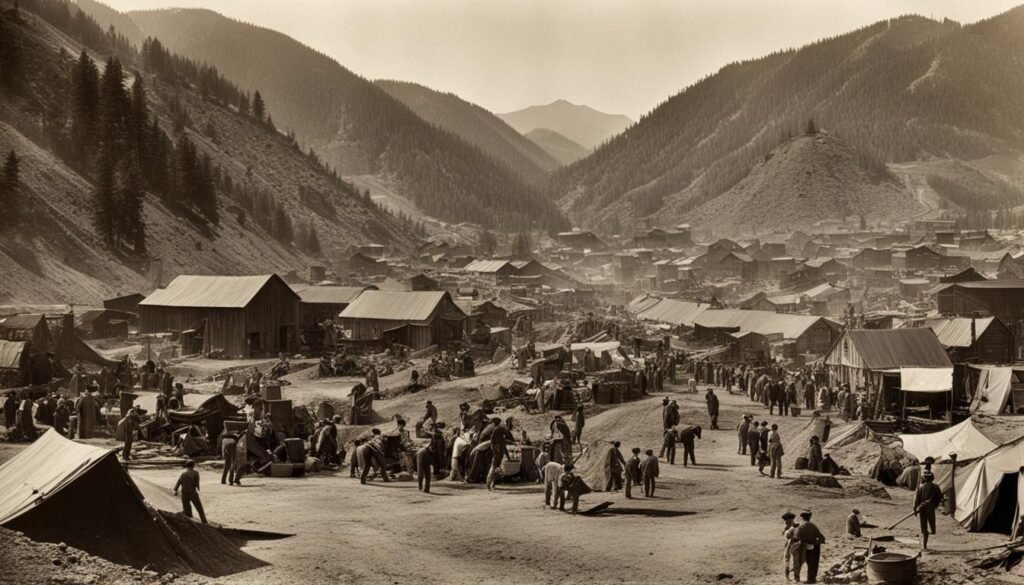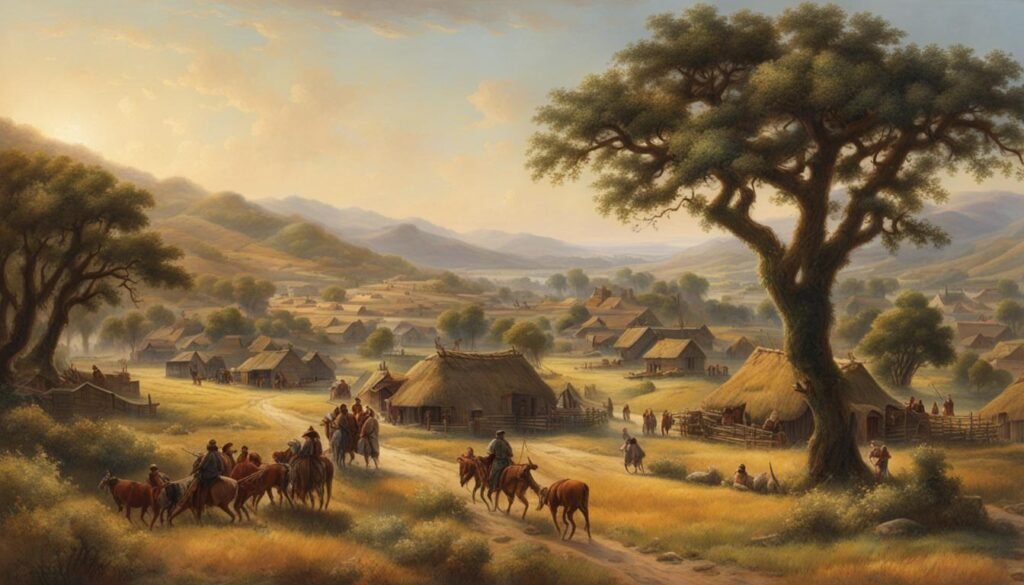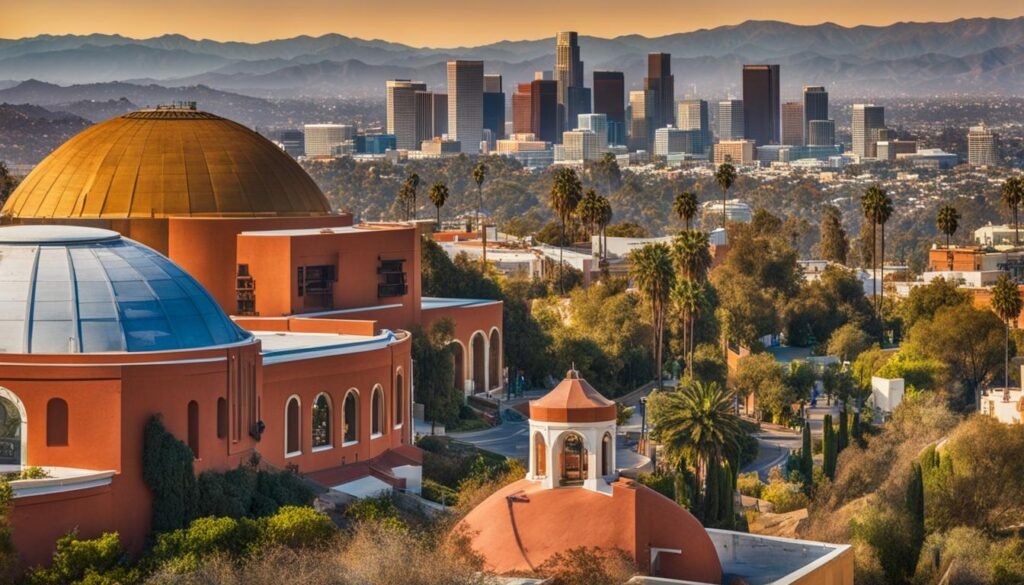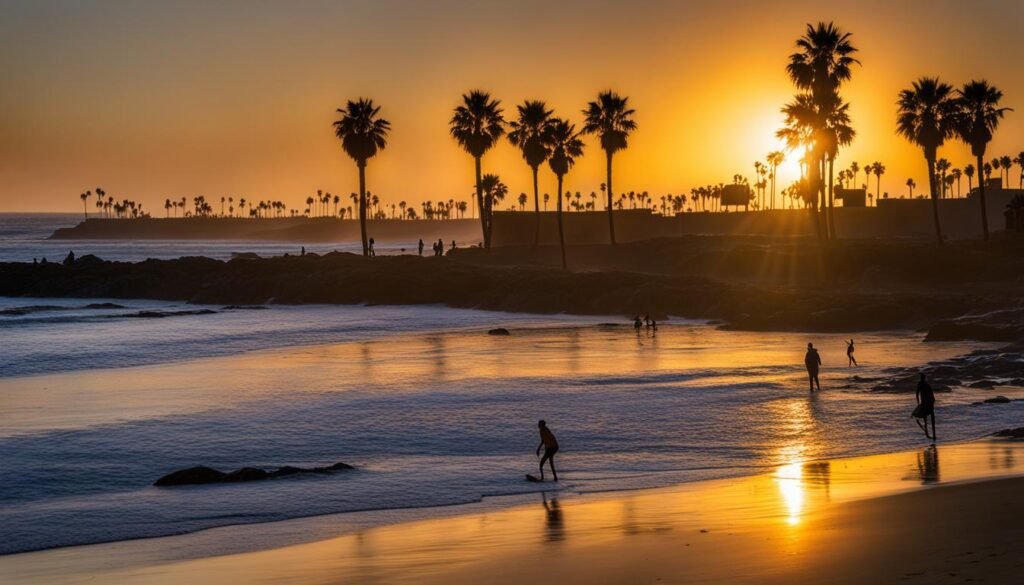When I delve into the historical tapestry of california tribal heritage, I’m instantly transported to a time well before skyscrapers and highways, to when the indigenous peoples of California lived in harmony with the profound beauty and diversity of the region. The indian tribes in California were not only robust societies but stewards of a land they knew intimately. From the giant redwoods shadowing the northwestern horizon to the rolling waves off the southern coast, each landscape nurtured unique native american culture in california, with traditions as varied as the terrain itself.
Pre Columbian California bore witness to the ingenuity and spirit of the california native american tribes. My exploration uncovers how tribes like the Chumash and Yurok thrived amidst immense ecological variety, presenting an intrinsic affiliation to the indigenous name for California—a term of reverence and connection to their homeland. The shadows of this ancient past and what did the natives call california persist, steeped in the wisdom and understanding of a balanced existence with nature, offering us invaluable insights into our own lives today.
Key Takeaways
- Deep understanding of California indian history and the diverse lifestyle of indian tribes in california
- Rich spiritual and ecological connection that fabricates the california indigenous tribes’ identity
- Insights into traditional adaptations and technologies of indigenous peoples of california
- Recognition of the california tribal heritage that continues to resist the tides of time
- Awareness of the cultural depth and resilience inherent in native american culture in california
- Appreciation for the indigenous peoples of California and their lasting legacy
Cultural and Geographical Diversity of California’s Native Tribes
When I consider the fascinating tapestry of California’s native peoples, I am struck by the richness of cultures that have been shaped and segmented by the state’s dramatic ecological features. The California native tribes articulated their societies around the very fabric of this varied landscape. Whether it was exploiting the acorn groves or the plentiful fishing opportunities provided by the rivers and bountiful coast, these tribes knew how to coexist with their unique environments.
An image springs to mind: a quiet valley, teeming with life and resources, unique to the native Californian tribes who flourish there, mirroring the vibrant diversity found in the ecosystems surrounding them.

Life in the Varied Regions of California
From the redwood-clad northwest where tribes such as the Hupa and Yurok reside, to the verdant valleys where the Miwok and Yokuts thrived, each area presented its opportunities and challenges. Well-recognized are the tribes from the northeast, known for their salmon fishing and acorn harvesting – critical sustenance that was cleverly integrated into their stable and bountiful economies.
The Influence of Climate and Ecology on Tribal Traditions
Indeed, the rhythm of life for the Indian in California was often in step with the ebb and flow of the seasons, dictating the cycle of harvesting, hunting, and fishing. The availability of resources like water, oak groves for acorns, and coastal areas abundant with marine life significantly influenced the cultural practices and societal structures of the California indigenous peoples. The native American tribes California showcases had a symbiotic relationship with their environment, fluidly adapting their lifestyle to the natural cycles of their respective regions.
Similarities and Differences Among the Tribes
Despite the geographical diversity, a sense of interconnectedness resonated within and across the tribal regions. Exemplified through the complex art of basket weaving, we see shared technologies and creative expressions, most notably in the Pomo baskets’ intricate designs. This craft symbolizes a deep understanding of the environment where materials are sourced and the shared cultural significance among different California tribes. With such traditions, California tribes and reservations remain strongholds of a resilient heritage and a testament to a vastly rich cultural legacy within the United States.
Social Structures and Village Organization in California Tribal Communities
As I delve into the intricate world of California tribal communities, I discover a fascinating spectrum of social organizations that vary as widely as the state’s geography. In this tapestry of cultures, both tribe and band structures in native California showcase a vibrant variety of village orchestrations and social coherence.
For instance, the California native tribes in the north often built substantial wood-framed structures to safeguard against the colder climate, showing a forward-thinking approach to communal living. Conversely, as we travel south, the architecture transforms with the use of thatched palm, signifying an astute utilization of local resources and a respect for the heat and environment unique to that region.
The settlements extended beyond mere abodes, though, embedding complex societal roles within. I learned that while some tribes in California revered shamans for their spiritual and healing prowess, others esteemed craft specialists who would weave tales as vividly as their baskets. Even daily customs such as sweating rituals were not universal but rather tailored to the locale, showcasing an intelligent adaptation to the physical and societal environment of the indigenous Californians.

In my exploration, what stands out is the organic connection between the tribe’s structure and its sustenance sources. Here I’ve outlined how resource abundance influenced the size and complexity of the villages:
- In regions bountiful with acorns and game, large permanent structures manifested, creating a sense of stability and permanence.
- In stark contrast, where resources were more sporadic, the ingenious outcome was a dynamic, nomadic presence, showcasing a remarkable flexibility.
Every thread of this cultural fabric weaves a narrative about how these proud, resilient communities embraced their diversity, turning everyday survival into an art form that has endured the test of time and transformation. My journey through the history and present of the California tribal communities only deepens my admiration for their profound connection to their ancestry and land.
Ceremonial and Ritual Significance in Tribal Societies
As I delve deeper into the heritage of the California tribal nations, I find that the ceremonial axis around which their culture revolves is not merely a matter of ritual practice. It is the beating heart of their community life, uniting individuals within the vast tapestry of indigenous tribes in California. The profound significance of these ceremonies extends beyond the immediate and into the sphere of the cosmic, where the balance between humans and the environment is meticulously maintained.

World Renewal Ceremonies and Their Impact on Social Cohesion
In my journey to understand the shared values among the California Native American tribes, I’ve observed the profound impact of World Renewal ceremonies. These group acts of faith, particularly eminent among tribes like the Yurok or Hupa, exemplify how such rituals are literally world-shaping. Commonly intended to avert calamities and to stabilize the cosmos, they embody the community’s aspiration for continuity and well-being. The cohesion these ceremonies foster is palpable, as they draw everyone to participate, cutting across the generational divide and keeping the fabric of tribal society tightly woven.
The Role of Shamanism and Spirituality in Tribal Life
One could never overlook the central role that shamanism in Native American culture plays within this context. The shaman, known to some by the indigenous name for California, the ‘kukini,’ is a figure of immense respect. This spiritual guide’s purview extends from mundane advices to critical healing rituals, resonating with the soul of the community and the individual alike. Their presence underscores the prominence of spirituality and ancestral wisdom—cornerstones that have cushioned these communities against historical and socioeconomic tumult. The inviolable place shamans hold in tribal society cements the relational bond that persists through shared beliefs and practices.
| Ceremony | Purpose | Tribe(s) Involved | Typical Activities |
|---|---|---|---|
| World Renewal | Harmony with Nature | Yurok, Hupa | Dancing, Singing, Prayer |
| Healing Rituals | Spiritual and Physical Healing | Various Tribes | Herb Use, Shamanistic Journeying |
| Passing of Wisdom | Transfer of Traditional Knowledge | Multiple Indigenous Groups | Storytelling, Elder Lectures |
Indian Tribes in California: The Struggle and Resilience of Native Communities
As a resilient facet of our multifaceted history, indigenous Californians have weathered the storm of European colonization, which forever altered the social, political, and economic landscapes of native American history in California. My exploration into this era reveals a narrative of endurance amidst cultural upheaval.
Spanish Colonization and Its Effects on Indigenous Peoples
The transformative impact of colonization on native Californian communities began with the Spanish mission system, demanding labor and, controversially, the renunciation of age-old spiritual practices. The subjugation extended beyond the spiritual to the corporeal, stripping the California Indian tribes of their treasured lands. In the face of such adversities, these tribes championed the imperative to preserve their intrinsic cultural identities.

Trade and Inter-Tribal Relations Pre- and Post-Contact
Trading among the Indian tribes in California was a preeminent activity that fostered symbiotic inter-tribal relations. This commerce, once animated by the exchange of shells and obsidian, showcases the adaptability of the California tribal communities. It is an economic ballet that persisted, even flourished, through eras of prosperity and peril. Let’s take a closer look at the trade items that circulated within these networks.
| Pre-Contact Trade Goods | Post-Contact Trade Goods |
|---|---|
| Obsidian | European Beads |
| Shells | Woven Fabrics |
| Baskets | Metal Tools |
| Foodstuffs | Livestock |
Reflecting upon the historical tapestry of the indigenous Californians and the profound impact of colonization, my narrative evokes the remarkable story of a people’s tenacity. It embraces the vibrant legacy of the California Indian tribes—a testament to the timeless resilience of California’s tribal communities.
Conclusion
The journey through the storied past and vibrant present of California’s indigenous tribes reveals a compelling narrative of survival, innovation, and preservation. I’ve seen how these communities have flourished amidst a mosaic of natural wonders—from the dense forests in the northwest to the stretching deserts of the southeast. California Indian tribes demonstrate exceptional adaptability and resilience, their hands shaping an array of ingenious tools and customs to thrive within their diverse homelands.
Now, the living descendants of these remarkable cultures persevere in the face of past adversities. Modernity has brought forth new challenges, yet the California native American tribes persist, fostering their ancestral wisdom on native American reservations in California. It’s a testament to their undiminished spirit that today they continue to celebrate the richness of their California tribal heritage, ensuring it is cherished and carried forward.
As I reflect on the stories of the California indigenous tribes, I am reminded of the importance of honoring and understanding our shared history. The narratives of the California Indian tribes foster a deeper connection to a past that is intricately woven into the fabric of our national identity, and it’s crucial that their enduring legacy continues to be recognized and uplifted for generations to come.
FAQ
What are some of the Indian tribes in California?
California is home to many native tribes such as the Tolowa, Yurok, Hupa, Chumash, Luiseno, and Kumeyaay, each with a unique cultural heritage and history.
What did the natives call California before European contact?
Before European contact, there was no single indigenous name for the entire region now known as California. Each tribe had its own name for the specific areas they inhabited. The concept of “California” itself is a European construct.
How did climate and ecology influence the tribal traditions in California?
The diverse climate and ecology of California from the rainforests in the northwest to the arid deserts of the south led tribes to develop unique adaptations, technologies, and social structures. The availability of natural resources such as acorns, salmon, and water significantly influenced their way of life and practices.
In what ways were the California tribes similar or different?
California tribes shared certain technologies and tools, like in fishing and basketry, but they also had distinct linguistic, cultural, and traditional practices shaped by their geographic environment and the resources available to them.
Can you describe the social structures and organization of California tribal communities?
The social structures of California’s tribes ranged from decentralized governance with independent geopolitical units or tribelets to tribes with central chieftains. Their organization was often related to resource abundance, with various specialized roles such as craft specialists and shamans serving their communities.
What is the significance of World Renewal Ceremonies among the tribes?
World Renewal Ceremonies, especially among tribes like the Yurok and Hupa, are profound communal events focused on maintaining balance with nature, uniting communities, and preventing disasters, highlighting the deep spiritual connection the tribes have with the earth.
How important was shamanism in tribal life?
Shamanism played a critical role in tribal life as shamans, or Indian doctors, served as spiritual leaders and healers. They were crucial in providing guidance, facilitating ceremonies, and upholding the spiritual wellness of their communities.
What impact did Spanish colonization have on the indigenous peoples of California?
Spanish colonization severely disrupted the lives of indigenous peoples in California by imposing the mission system, which aimed at religious conversion and forced labor. This led to the loss of autonomy, traditional lifestyle disruptions, and the dispossession of lands and resources.
How did trade and inter-tribal relations evolve after the European contact?
After European contact, the intricate trade networks that had existed among the tribes adapted to the new circumstances. The exchange of goods like shells, obsidian, and other items persisted, showcasing the adaptability and resilience of these communities in the face of change.

